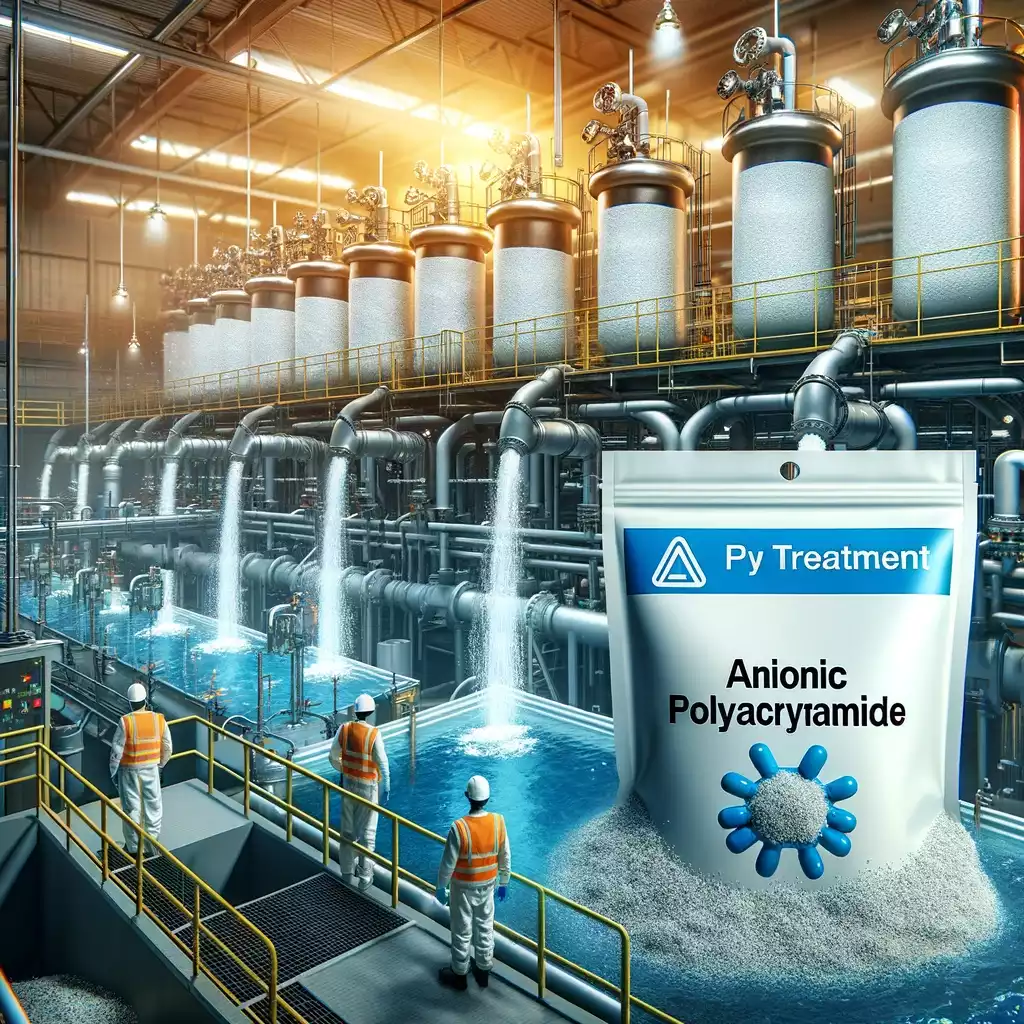Anionic polyacrylamide is a commonly used substance in water treatment. Its method of application can significantly impact the purification effect on water quality. Sometimes, to the layperson, the water appears murky and not clean after treatment. This phenomenon is likely due to improper application methods rather than the quality of the product itself. This article aims to delve into the correct application of anionic polyacrylamide to address this common concern.

Reasons for Unclear Water After Using Anionic Polyacrylamide
Incomplete Dissolution
If the polyacrylamide is not fully dissolved, it can result in uneven dispersion within the water, affecting the purification of the water quality. For example, if polyacrylamide is not dissolved in the recommended proportion and method, it will form microparticles in the water, affecting its adsorption and flocculation of pollutants.
Improper Selection
When choosing polyacrylamide, it must be selected based on the properties of the wastewater. If the chosen PAM does not match the actual properties of the wastewater, such as particle size and organic content, the flocculation effect will be affected. For instance, when treating wastewater with high organic content, it is essential to choose the appropriate polyacrylamide to ensure the best flocculation effect.
Complementary Use of Multiple Chemicals
For high chroma wastewater, a single treatment method often fails to achieve the desired effect. In such cases, it is worth considering the use of various chemicals that complement each other. Adding flocculants, oxidizers, and other agents can lead to more thorough treatment of the wastewater and improve its purification.
pH Adjustment
The pH of wastewater is a significant factor in the application of chemical agents. If the pH of the wastewater is not within the appropriate range (typically 6 to 10), the agent will not be fully effective. For instance, if the wastewater pH is acidic or alkaline, it is necessary to adjust the pH first to ensure the selection and use of the chemical agent at the correct pH.
Wastewater Flow State
When using a polyacrylamide solution, it is crucial to ensure the fluidity of the wastewater. Stagnant water can cause uneven dissolution of chemical agents in the water, affecting the treatment effect. For example, ensuring full circulation of the wastewater can promote the even dispersion of the chemical agent and, thus, achieve better flocculation.
Temperature Control
If the wastewater temperature is too high, it can reduce the flocculation rate. For example, when wastewater temperatures exceed 60°C, it can degrade the performance of polyacrylamide products. Therefore, it is necessary to cool the wastewater at higher temperatures to ensure the maximum effectiveness of the chemical agents.
Corresponding Solutions
When Dissolution is Incomplete Ensure that polyacrylamide is added accurately according to the recommended ratio. Use professional metering equipment to ensure accurate measurements. After adding, use a stirrer to mix thoroughly, ensuring the chemical agent is evenly dispersed in the water. In some conditions, increasing the water temperature can help dissolve the polyacrylamide. To promote full dissolution and enhance flocculation, it is essential to ensure that the chemical is added within the appropriate temperature range.
Extending the stirring time ensures the polyacrylamide is dissolved and distributed in the water. Stir continuously until the chemical is completely dissolved to prevent the accumulation of medication or microparticles. In some cases, solubilizing agents that improve the water solubility of polyacrylamide can be used. Choose the appropriate additives as required and add them in the recommended amounts. The method of adding polyacrylamide should be adjusted appropriately, such as adding it gradually and evenly to the pool, rather than all at once. This can prevent rapid coagulation of the medication in the water and increase dissolution efficiency.
When pH is Inappropriate If the pH is acidic, alkaline substances such as sodium hydroxide or limewater can be added to increase the pH; if the pH is weak, acidic substances like sulfuric acid or hydrochloric acid can be added to lower the pH. Pre-treat the wastewater to reach the optimal pH range to enhance the efficacy of the flocculant.
Therefore, only through the scientific and reasonable treatment operations of anionic polyacrylamide can the issue of unclear water be effectively prevented. By selecting the appropriate chemicals, following strict operating procedures, and continuously monitoring and adjusting, water quality can be effectively improved, ensuring clean water that meets environmental standards. This is not only the responsibility of scientific and technical workers but also a step forward in advancing water treatment processes and protecting environmental resources.
